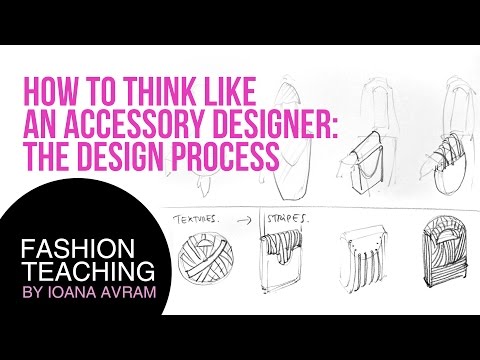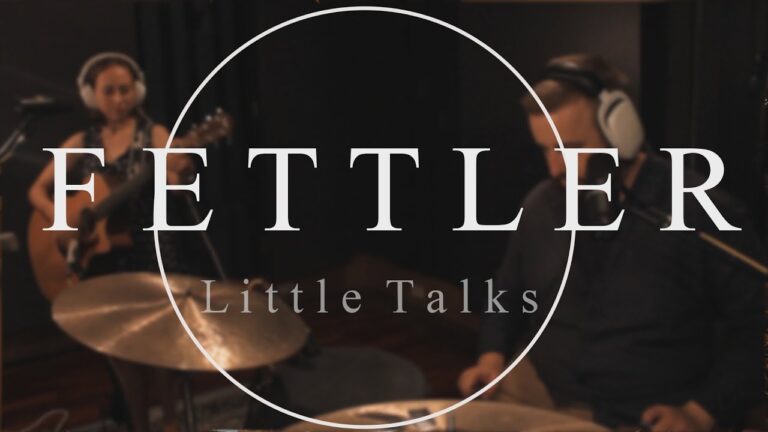Accessory Designer Job Description and Salary
Accessory Designer Job Description
An accessory designer is a creative professional responsible for designing and developing various accessories such as handbags, jewelry, belts, scarves, and hats. They collaborate with fashion designers to create accessories that complement and enhance the overall look and style of a collection.
The job responsibilities of an accessory designer include researching current fashion trends, brainstorming and sketching design ideas, selecting materials and colors, creating prototypes, and overseeing the production process. They also collaborate with manufacturers and suppliers to ensure the quality and timely delivery of the accessories.
In addition to their design skills, accessory designers need to have a strong understanding of market trends, consumer preferences, and production techniques. They should possess excellent communication, problem-solving, and teamwork skills to effectively collaborate with other professionals in the fashion industry.
Accessory Designer Salary
The salary of an accessory designer can vary depending on factors such as experience, location, and the size of the company. According to the Bureau of Labor Statistics, the median annual wage for fashion designers, including accessory designers, was $73,790 as of May 2019.
However, it is important to note that salaries can range significantly, with entry-level designers earning around $40,000 per year and experienced designers earning six-figure salaries. In major fashion capitals like New York, London, and Paris, accessory designers may have higher earning potential due to the concentration of luxury fashion brands.
Furthermore, accessory designers who have established their own successful brands or work for prestigious fashion houses may enjoy additional financial benefits such as profit-sharing, bonuses, and royalties. Overall, the salary of an accessory designer can be lucrative for those with talent, skill, and a strong portfolio of designs.

Accessory Designer Job Description Template
An accessory designer is responsible for creating and designing various accessories such as bags, shoes, jewelry, belts, hats, and scarves. They work in the fashion industry and collaborate with fashion designers, manufacturers, and retailers to develop stylish and functional accessories that complement clothing lines.
The primary role of an accessory designer is to research and identify current fashion trends, materials, and techniques. They brainstorm and sketch their ideas, considering factors such as color, shape, texture, and size. They also experiment with different materials and techniques to create unique and innovative designs.
Once the initial designs are approved, the accessory designer creates detailed technical drawings and specifications. They work closely with manufacturers to ensure that the designs are accurately translated into finished products. They may also collaborate with pattern makers and sample makers to create prototypes.
Accessory designers are involved in the entire production process, from concept development to final product. They review and approve samples and make any necessary adjustments or modifications. They also ensure that the accessories meet quality standards and are produced within the given budget and timeline.
In addition to designing, accessory designers also stay updated on market trends, consumer preferences, and competitor products. They analyze sales data and customer feedback to identify opportunities for improvement or to develop new accessory lines.
Overall, an accessory designer plays a crucial role in the fashion industry by creating unique and appealing accessories that enhance and complete fashion collections. They possess a strong sense of style, creativity, and attention to detail.
Accessory Designer Responsibilities
- Researching fashion trends and market demands
- Creating designs for various accessories such as handbags, shoes, jewelry, belts, etc.
- Developing sketches and prototypes of accessories
- Collaborating with suppliers and manufacturers to source materials and components
- Overseeing the production process to ensure quality and timely delivery
- Testing and evaluating product samples for functionality and durability
- Conducting market analysis and competitor research to identify potential opportunities
- Collaborating with the marketing team to create promotional materials and campaigns
- Attending trade shows and fashion events to showcase and promote accessory designs
- Providing input on pricing, packaging, and branding strategies
- Keeping up-to-date with fashion trends and industry developments
- Meeting with clients to understand their specific design requirements and preferences
Accessory Designer Requirements
- Strong artistic skills and a keen eye for design
- Knowledge of fashion trends and the ability to anticipate future trends
- Understanding of materials, textiles, and manufacturing processes
- Proficiency in computer-aided design (CAD) software
- Excellent communication and collaboration skills
- Attention to detail and the ability to meet deadlines
- Experience in creating sketches, prototypes, and samples
- Ability to work with a variety of materials, such as leather, metal, fabric, and plastic
- Knowledge of different accessory categories, such as handbags, jewelry, belts, scarves, etc.
- Understanding of market demands and consumer preferences
Accessory Designer Salary
How much does a Accessory Designer make?
| Country | Average Salary (USD) |
|---|---|
| United States | 65,000 |
| United Kingdom | 40,000 |
| Australia | 55,000 |
| Canada | 50,000 |
An accessory designer is responsible for creating and designing various accessories such as jewelry, handbags, belts, and scarves. They work to develop new designs, sketching ideas, and selecting materials. The salary of an accessory designer varies depending on factors such as experience, location, and the employer. According to the table above, the average salary for accessory designers is $65,000 in the United States, $40,000 in the United Kingdom, $55,000 in Australia, and $50,000 in Canada. It is important to note that these figures are approximate and can vary.
A video on the topic Accessory Designer
Video Source : Fashion teaching
The Best Universities For The Accessory Designer Profession.
- Parsons School of Design (New York, USA)
- Central Saint Martins (London, UK)
- Fashion Institute of Technology (New York, USA)
- London College of Fashion (London, UK)
- Polimoda (Florence, Italy)
- Royal Academy of Fine Arts Antwerp (Antwerp, Belgium)
- Domus Academy (Milan, Italy)
- Savannah College of Art and Design (Georgia, USA)
- ESMOD International (Paris, France)
- Antwerp Royal Academy of Fine Arts (Antwerp, Belgium)
Interview Questions for Accessory Designer
1. Can you tell us about your background and experience as an accessory designer?
I have a degree in fashion design and have been working as an accessory designer for the past five years. During this time, I have worked for both small boutique brands and larger fashion houses, gaining experience in creating and developing various types of accessories such as handbags, jewelry, and scarves.
2. What inspires you when designing accessories?
I find inspiration in a variety of sources, including nature, art, and different cultures. I love to travel and explore different places, as it often sparks creativity and new ideas for my designs. Additionally, I keep up with current fashion trends and pay attention to what consumers are looking for in accessories.
3. How do you approach the design process for a new accessory?
When starting a new design, I first research the latest trends in accessories and identify the target market for the product. Then, I sketch out multiple design concepts and choose the most promising ones to develop further. I also experiment with different materials and techniques to ensure the final product is both visually appealing and functional.
4. How do you ensure that your accessories are both fashionable and functional?
I believe that fashion and function should go hand in hand. To ensure this, I conduct thorough testing and prototyping of my designs. I consider factors such as durability, comfort, and usability in the design process. I also listen to feedback from users and make necessary adjustments to enhance the functionality of the accessories.
5. How do you stay updated with the latest trends and developments in the accessory industry?
I regularly attend fashion shows, trade fairs, and industry events to stay updated with the latest trends and developments. I also follow fashion blogs, read industry magazines, and engage in online communities dedicated to accessory design. Networking with other designers and professionals in the industry is also a great way to stay informed.
6. Can you give an example of a challenging project you worked on and how you overcame the challenges?
One challenging project I worked on was designing a collection of handbags for a luxury brand. The brand had a specific aesthetic and target market, which required me to create unique and high-end designs. To overcome the challenges, I conducted extensive research on the brand’s existing products and customer preferences. I collaborated closely with the brand’s creative team to ensure my designs aligned with their vision. The end result was a successful collection that received positive feedback from both the brand and customers.
7. How do you incorporate sustainability and ethical practices in your accessory designs?
Sustainability and ethical practices are important considerations in today’s fashion industry. I strive to use eco-friendly materials and production methods whenever possible. I also support fair trade practices and work with suppliers who prioritize ethical manufacturing processes. Additionally, I design accessories with durability in mind, aiming to create products that will last and reduce the need for frequent replacements.
8. How do you handle feedback and criticism on your designs?
I believe that feedback and criticism are valuable opportunities for growth. I welcome feedback from colleagues, clients, and customers, as it helps me to improve my designs and better understand the needs of the market. I take feedback constructively and use it to refine my designs and skills as an accessory designer.
9. What do you think sets your accessory designs apart from others in the industry?
I believe that my attention to detail, creativity, and ability to combine different influences sets my accessory designs apart. I strive to create unique and visually striking pieces that stand out in the market. Additionally, my commitment to incorporating sustainable and ethical practices in my designs adds value and sets me apart from others in the industry.
10. How do you handle tight deadlines and manage your time effectively as an accessory designer?
Working with tight deadlines is a common occurrence in the fashion industry. To manage my time effectively, I prioritize tasks, create a detailed schedule, and set realistic goals for each project. I am also accustomed to multitasking and working efficiently under pressure. If necessary, I communicate with the relevant stakeholders to negotiate realistic deadlines and ensure successful completion of projects.






